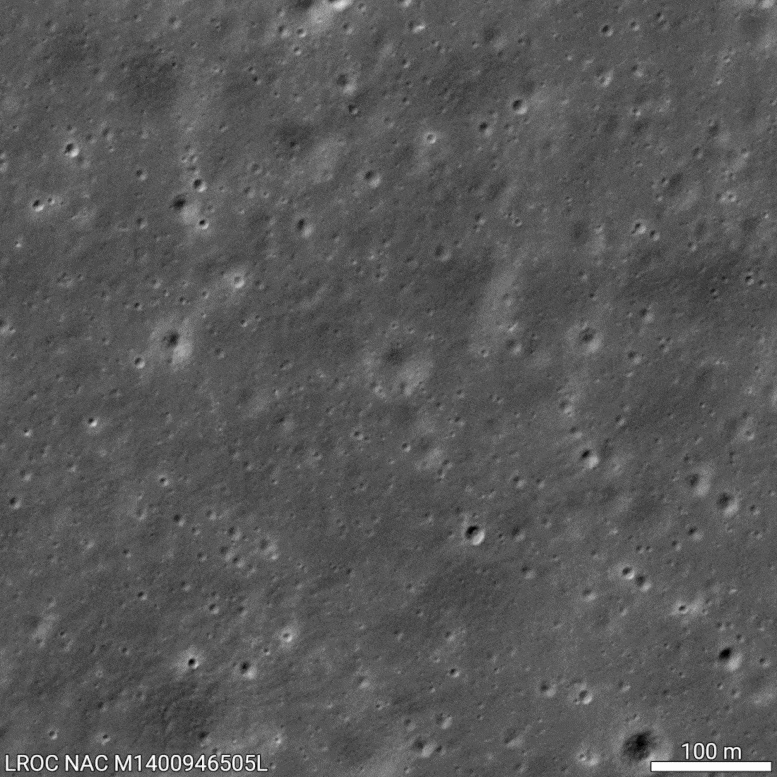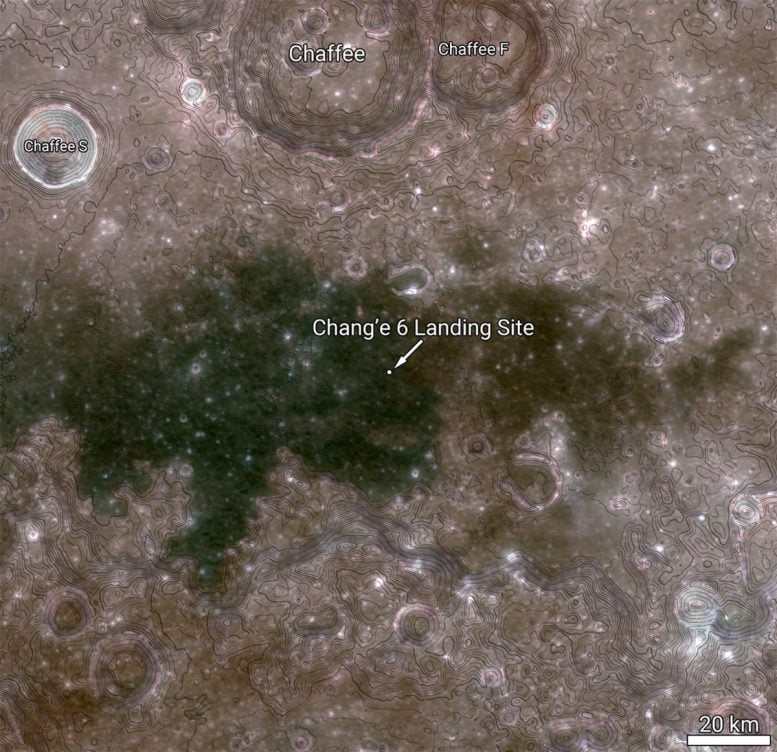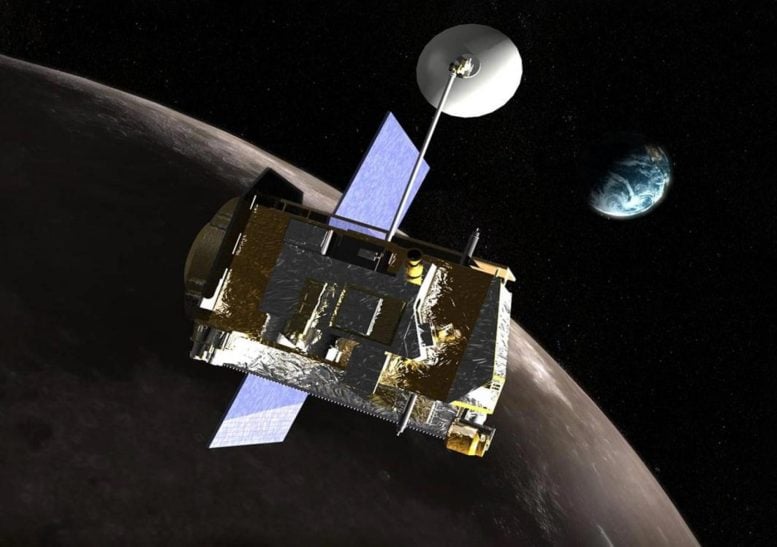This image from NASA’s Lunar Reconnaissance Orbiter Camera shows China’s Chang’e 6 probe in the Apollo basin on the far side of the moon on June 7, 2024. The lander is visible as a small cluster of bright pixels in the center of the image. The image is 552 meters wide; north is up. Credit: NASA/GSFC/Arizona State University
NASAThe Lunar Reconnaissance Orbiter photographed China’s Chang’e 6 probe on the Moon, revealing its location in a crater in the geologically rich Apollo Basin, characterized by ancient basalt flows.
On June 7, NASA’s LRO (Lunar Reconnaissance Orbiter) photographed China’s sample reentry probe Chang’e 6 on the far side of the Moon. took a picture showing the lander at the edge of an eroded crater 55 yards (about 50 meters) in diameter.
The LRO Camera team calculated the coordinates of the landing site as about 42 degrees south latitude, 206 degrees east longitude, at an altitude of about minus 3.27 miles (minus 5,256 meters).

This before and after animation of LRO images shows the appearance of the Chang’e 6 lander. The increased brightness of the terrain around the lander is caused by interference from the lander’s engines and is similar to the blast zone seen on other lunar landers. The before image is from March 3, 2022, and the after image is from June 7, 2024. Credit: NASA/GSFC/Arizona State University
The Chang’e 6 landing site is located toward the southern edge of the Apollo basin (about 306 miles or 492 km in diameter, centered at 36.1 degrees south latitude, 208.3 degrees east longitude). Basalt lava erupted south of Chaffee S Crater about 3.1 billion years ago and flowed downhill to the west until it hit a local topographic high, probably related to the fault. Several wrinkled ridges in this area distorted and raised the surface of the mare. The landing site lies about midway between two of these prominent ridges. This basalt flow also overlies a slightly older flow (about 3.3 billion years old) visible further to the west, but the younger flow is different because it has higher amounts of iron oxide and titanium dioxide.

Regional context map of the Chang’e 6 landing site. Color differences have been improved for clarity. The dark area is a deposit of basalt mares; the bluer areas of the mare are flows with higher titanium content. Contour lines marking elevation intervals of 100 meters (about 328 ft) are overlaid to give an idea of the topography. The image is about 118 miles (190 km) across. Credit: NASA/GSFC/Arizona State University
NASA’s Lunar Reconnaissance Orbiter (LRO) is the flagship spacecraft designed for detailed exploration of the lunar surface. Launched on June 18, 2009, the mission primarily aims to collect high-resolution images and data to help select future landing sites, evaluate the Moon’s mineral resources, and analyze the lunar radiation environment. Equipped with a suite of powerful instruments, including high-resolution cameras and a laser altimeter, LRO maps the lunar terrain in exceptional detail, helping scientists understand the moon’s geology and identify areas rich in resources such as water ice.

Artist’s rendering of the NASA Lunar Reconnaissance Orbiter. Credit: NASA’s Goddard Space Flight Center
LRO has significantly advanced our knowledge of the Moon, contributing to discoveries such as confirming the presence of water ice in permanently shadowed craters and mapping lunar surface temperatures. Instruments such as the Lunar Orbiter Laser Altimeter (LOLA) and the Diviner Lunar Radiometer Experiment provide critical data on the Moon’s topography and thermal behavior that are critical to planning future human and robotic missions. By continuing to transmit valuable data back to Earth, LRO supports ongoing research that improves our strategies for returning to the Moon and beyond, marking it as a cornerstone of lunar exploration technology.